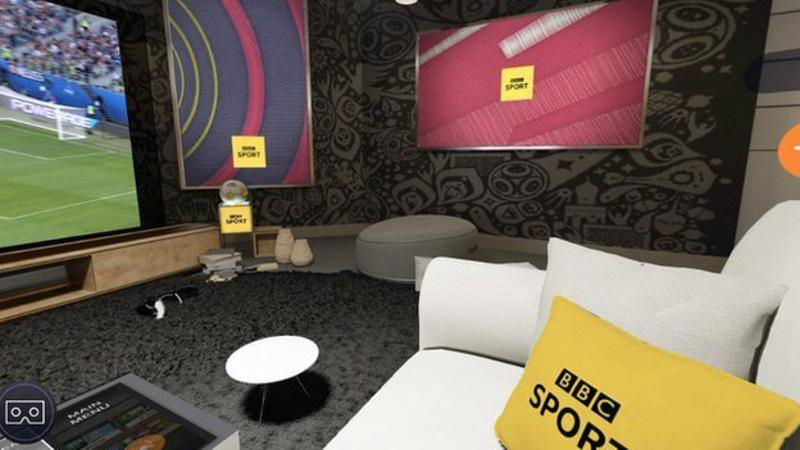The technology and equipment needed to film all 64 matches of the 2018 World Cup
He shoots their scores

1 billion. That’s how many people are likely to tune in to watch the Russia World Cup 2018 final. To make sure that every single one of those football fans get to see the match in the best possible way, a lot of preparation has been done.
Filming a football match is a complicated process, that takes hundreds of man hours before a ball is kicked. It also takes a huge amount of infrastructure investment - in total 300 broadcasters are showcasing live matches to 210 countries.
In the months leading up to the World Cup, Fifa announced that this would be the first to have all 64 matches shot in Ultra HD, with HDR to boot. To do this, it was revealed that 37 cameras would cover every single match.
A hybrid UHD/HDR/1080p setup is being used. In short, this means that, regardless of the picture quality chosen by broadcasters around the world, there is a feed they can take and use.
Out of the 37 cameras shooting the action, eight are shooting in UHD/4K format (the main one with a wide lens to make things look a touch more cinematic), another eight are piping out 1080p/HDR and 1080p/SDR dual output.
Getting the shot
To make sure that even the fastest goal isn’t missed, a further eight cameras are there purely to capture footage to be shown in super slow motion and then there are two ultra-motion cameras. These are usually cameras used for things like Hawk-Eye - where the game is shot at a really high frame rate (usually in the thousands) then it can be slowed down for research purposes.
These cameras are key for things like VAR (video assisted referee) technology and have already been used to make sure the right refereeing decisions are made when controversial moments arise in a game.
Get daily insight, inspiration and deals in your inbox
Sign up for breaking news, reviews, opinion, top tech deals, and more.
Another two cameras are the Cinefex helicam and a cable cam. Oh, and there are two reverse corner cameras and one tunnel camera to round things off.
If that wasn’t enough, there’s another camera that will be filming the match in 360 degrees. This is for those who want to watch a bit of football in virtual reality.
In total, there are 370 Sony cameras in use, 29 XVS switchers (also made by Sony) and a 1000 plus monitors used to deliver the feeds.
All of this is done by a company called Host Broadcast Services (HBS), who have been doing the job of showcasing the World Cup since the 2002 tournament in Korea/Japan.

Given the focus is very much on 4K this World Cup (there were trials of the format in Brazil 2014 but not much else), it’s a shame then that the world’s TV channels haven’t quite embraced the format as you would have expected.
A lot of this does have to do with broadcasting rules in many countries that realise the importance of World Cup matches being accessible to as many people as possible, so it’s insisted that they are shown on free-to-air channels.
These channels simply don’t have the investment - or the technology - needed to show the games in 4K.
This doesn’t mean that you can’t watch 4K football. In the UK, the BBC has gotten round the fact that it doesn’t have a 4K channel (remember, it’s a broadcaster that still broadcasts local news in standard definition) by showing its games in 4K on the iPlayer, it’s fantastic IPTV platform.
The stream is limited to certain TVs and set-top boxes and there is a limit to how many streams can be shown at once, but it’s an impressive demo of what’s to eventually come to its terrestrial channels.
In the US, where cable and subscription services rule the broadcast waves four providers are offering 4K: Layer3 TV, Dish Network (54 games in total), Comcast Xfinity X1 (4K games are available 24 hours after their live showing through VOD) and those with Hisense TVs and the Fox Sports App can also view 4K content.
Let’s hope by the Qatar World Cup 2022, 4K channels will be standard. Then again, we’ll all probably be wanting 8K - given 8K filming trials are currently taking place at the World Cup.
Latin American broadcaster Globo has been running 8K feeds in Brazil and can be viewed at the Rio de Janeiro’s Museu de Amanhã - which translates aptly as the Museum of Tomorrow.
(main image: Gokhan Balci/Anadolu Agency/Getty Images)

TechRadar's World Cup coverage is brought to you in association with Honor.
Marc Chacksfield is the Editor In Chief, Shortlist.com at DC Thomson. He started out life as a movie writer for numerous (now defunct) magazines and soon found himself online - editing a gaggle of gadget sites, including TechRadar, Digital Camera World and Tom's Guide UK. At Shortlist you'll find him mostly writing about movies and tech, so no change there then.
